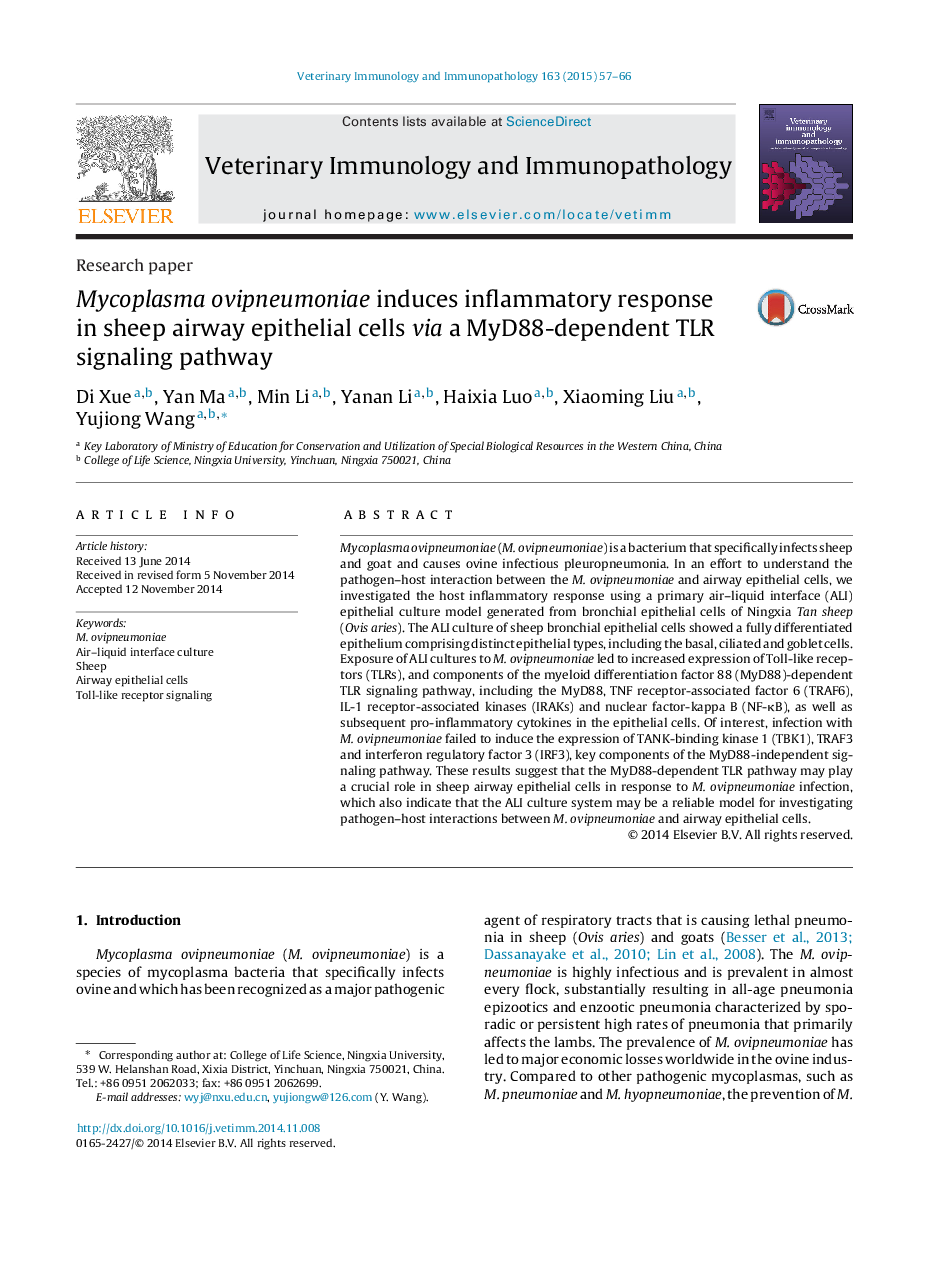| کد مقاله | کد نشریه | سال انتشار | مقاله انگلیسی | نسخه تمام متن |
|---|---|---|---|---|
| 2461428 | 1555027 | 2015 | 10 صفحه PDF | دانلود رایگان |

Mycoplasma ovipneumoniae (M. ovipneumoniae) is a bacterium that specifically infects sheep and goat and causes ovine infectious pleuropneumonia. In an effort to understand the pathogen–host interaction between the M. ovipneumoniae and airway epithelial cells, we investigated the host inflammatory response using a primary air–liquid interface (ALI) epithelial culture model generated from bronchial epithelial cells of Ningxia Tan sheep (Ovis aries). The ALI culture of sheep bronchial epithelial cells showed a fully differentiated epithelium comprising distinct epithelial types, including the basal, ciliated and goblet cells. Exposure of ALI cultures to M. ovipneumoniae led to increased expression of Toll-like receptors (TLRs), and components of the myeloid differentiation factor 88 (MyD88)-dependent TLR signaling pathway, including the MyD88, TNF receptor-associated factor 6 (TRAF6), IL-1 receptor-associated kinases (IRAKs) and nuclear factor-kappa B (NF-κB), as well as subsequent pro-inflammatory cytokines in the epithelial cells. Of interest, infection with M. ovipneumoniae failed to induce the expression of TANK-binding kinase 1 (TBK1), TRAF3 and interferon regulatory factor 3 (IRF3), key components of the MyD88-independent signaling pathway. These results suggest that the MyD88-dependent TLR pathway may play a crucial role in sheep airway epithelial cells in response to M. ovipneumoniae infection, which also indicate that the ALI culture system may be a reliable model for investigating pathogen–host interactions between M. ovipneumoniae and airway epithelial cells.
Journal: Veterinary Immunology and Immunopathology - Volume 163, Issues 1–2, 15 January 2015, Pages 57–66